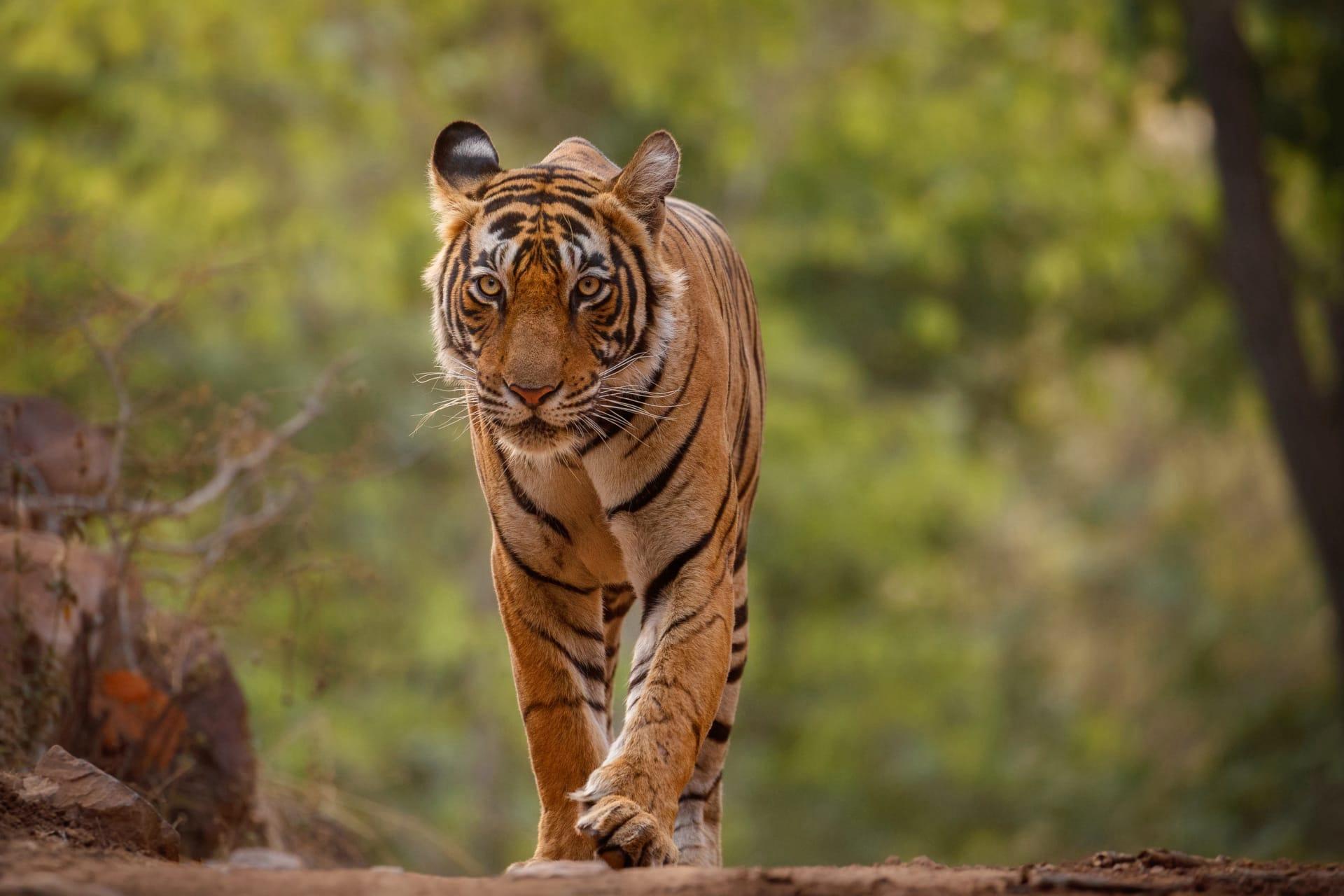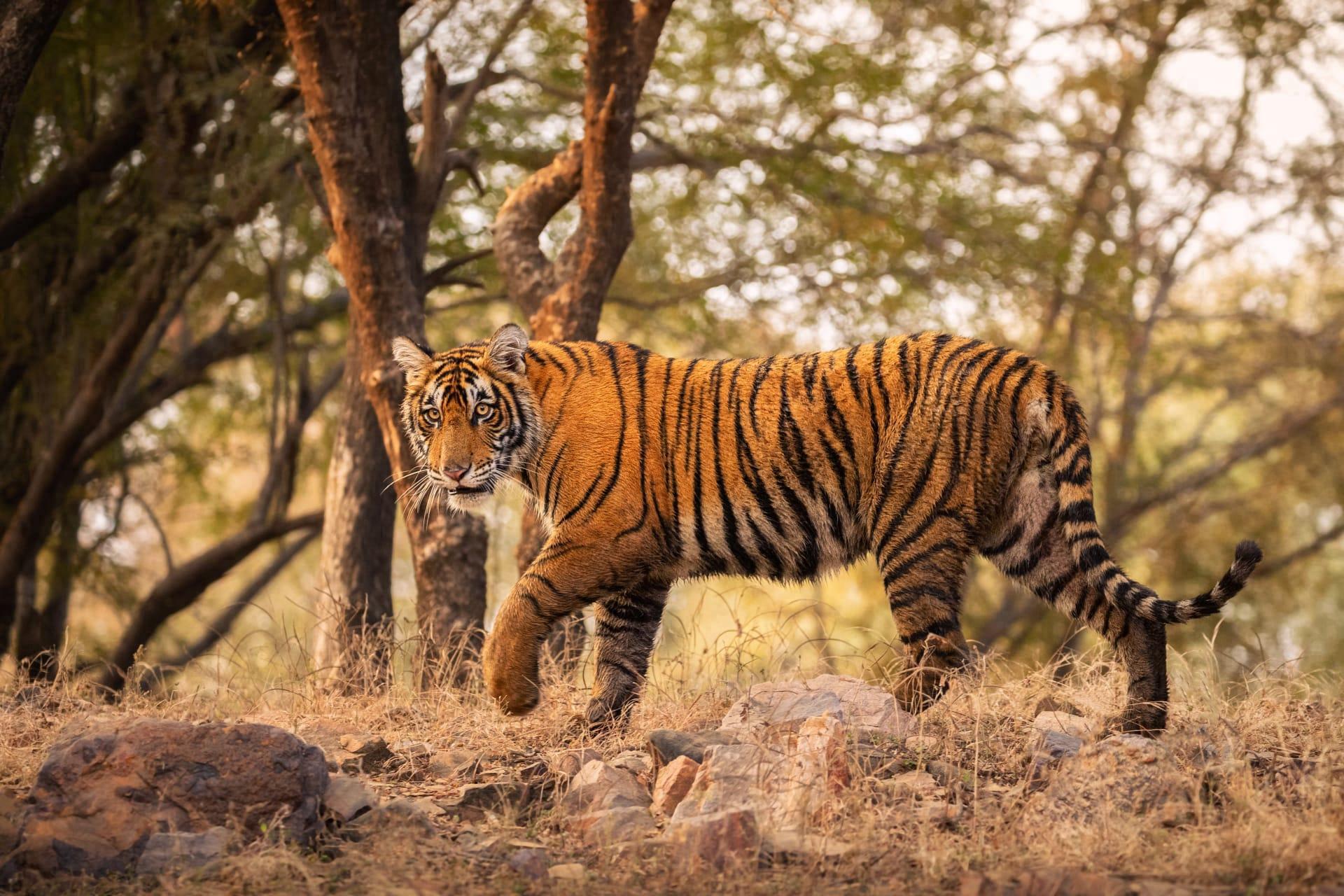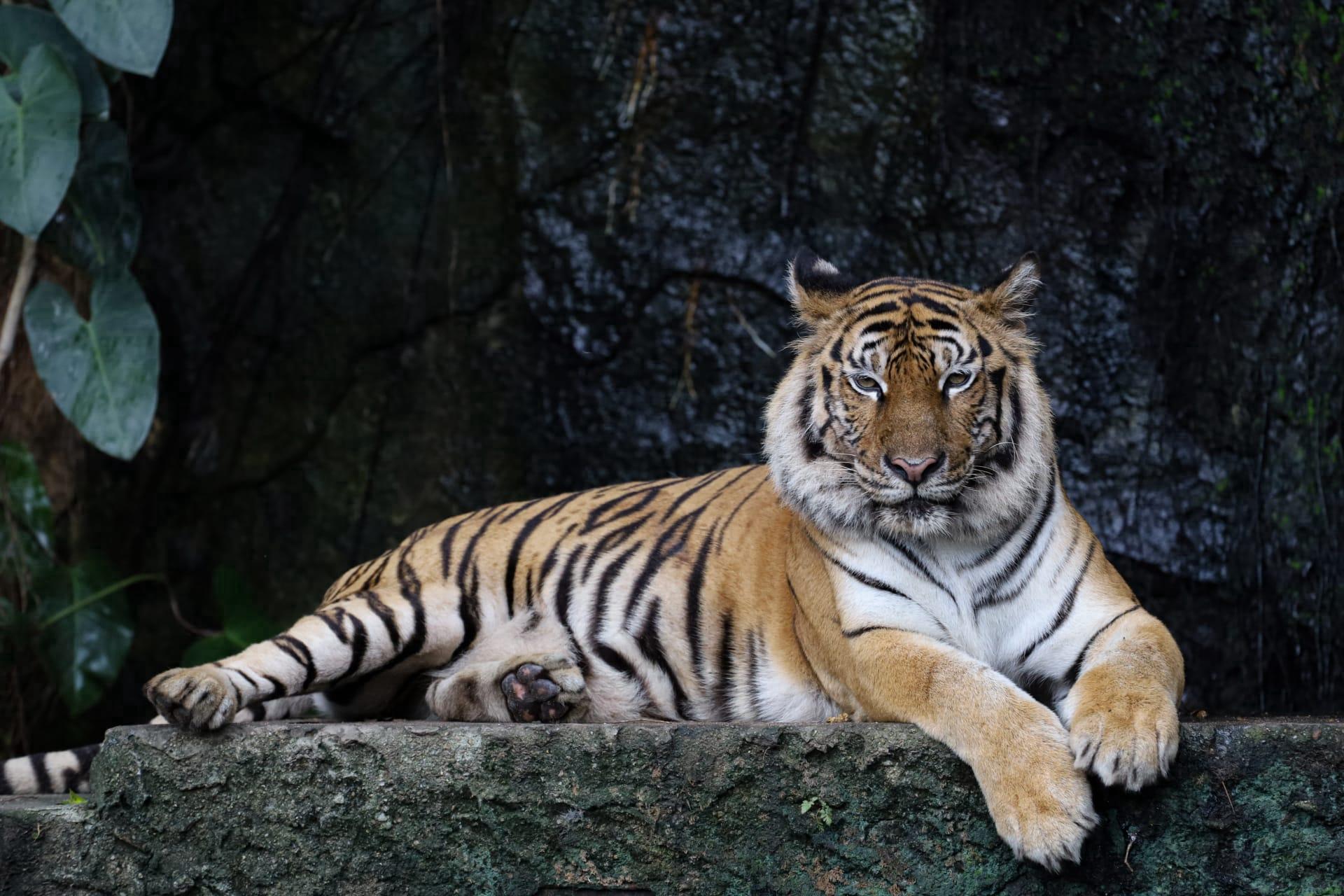Tiger
- Home /
- Mini Encyclopedia /
- Animal /
- Tiger
1
Tigers, scientifically named Panthera tigris, are magnificent creatures belonging to the Felidae family. They are the largest members of the cat family and are renowned for their power and strength. Classified into several subspecies, these majestic animals have unique stripes on their fur, varying in pattern and density. The subspecies include the Bengal tiger (P. t. tigris), the Siberian tiger (P. t. altaica), the Indochinese tiger (P. t. corbetti), the Malayan tiger (P. t. jacksoni), the Sumatran tiger (P. t. sumatrae), and the critically endangered South China tiger (P. t. amoyensis).
Tigers are primarily found in Asia, with their habitat extending from the Siberian taiga and cold forests of the Russian Far East to the tropical forests of Indonesia and Bangladesh. Bengal tigers are mainly located in India, with smaller populations in Bangladesh, Nepal, Bhutan, China, and Myanmar. The Siberian tiger inhabits the Russian Far East, northeastern China, and possibly North Korea. Indochinese tigers roam throughout mainland Southeast Asia, Malayan tigers are found in the southern tip of the Malay Peninsula, and Sumatran tigers are exclusively in Indonesia on the island of Sumatra. The South China tiger is currently found only in zoos, with none known in the wild.

2
Question: Can tigers live in groups like lions?
Answer: Unlike lions, tigers are solitary animals. They prefer living alone and mark their territories to keep others away. Each tiger has a home range that overlaps with those of the opposite sex but rarely with those of the same sex. The size of their territories varies depending on the habitat and availability of prey. For example, in the Siberian taiga, a male's territory can span up to 4,000 square kilometers due to sparse prey, while in the more prey-rich Indian jungles, it can be as little as 20 square kilometers.

3
Tigers are apex predators, at the top of the food chain, and their survival strategy revolves around their powerful physical attributes and solitary lifestyle. They have muscular bodies, sharp claws, and strong jaws, ideal for hunting. Tigers are ambush predators, relying on stealth and strength to catch their prey, which includes deer, wild boar, and other large mammals. They have excellent night vision and a keen sense of smell, aiding them in hunting in low light conditions.
Their striped fur acts as camouflage, blending into the forest environment, making it difficult for prey to spot them. Tigers are also adept swimmers, and unlike many other cats, they often enter water to cool off or hunt. Each tiger maintains and defends its territory fiercely, ensuring adequate food supply and space for breeding. This territorial behavior reduces conflicts and enhances survival odds.

4
In the ecosystem, tigers play a critical role in maintaining balance. As apex predators, they help control the population of herbivores, which in turn maintains the vegetation level and the overall health of the habitat. By keeping herbivore populations in check, tigers prevent overgrazing, which can lead to a loss of plant diversity and negatively impact the ecosystem's health.
Their role extends beyond direct control of prey populations. Tigers influence the behavior of other animals in their habitat. This phenomenon, known as the "landscape of fear," can lead to changes in the feeding, movement patterns, and habitat use of prey species, indirectly shaping the ecosystem. Furthermore, tigers are an indicator species; their presence and health reflect the well-being of the entire ecosystem. Conserving tigers and their habitat ensures the survival of many other species and maintains ecological integrity.

5
Film: "Tiger: Spy in the Jungle" is a captivating documentary produced by the BBC in the United Kingdom, released in 2008. This documentary offers an intimate look into the lives of tigers in the wild, utilizing hidden cameras carried by elephants to capture unprecedented footage. It explores the daily activities, hunting techniques, and family dynamics of these majestic animals in their natural habitat, providing a unique and insightful perspective on tiger behavior.
Book: "The Tiger: A True Story of Vengeance and Survival" by John Vaillant, published in the United States in 2010, delves into the gripping tale of a man-eating tiger in Russia's Far East. The book weaves a fascinating narrative, blending local history, Russian culture, and conservation issues, while exploring the complex relationship between humans and tigers.
Book: "Tigers in the Snow" by Peter Matthiessen, released in 2000 in the United States, offers a profound insight into the plight of the Siberian tiger. The book combines natural history with personal observation, discussing the challenges these magnificent animals face in the wild. Matthiessen's narrative is both a plea for tiger conservation and a detailed account of these animals' biology, behavior, and struggle for survival in the harsh Siberian wilderness.